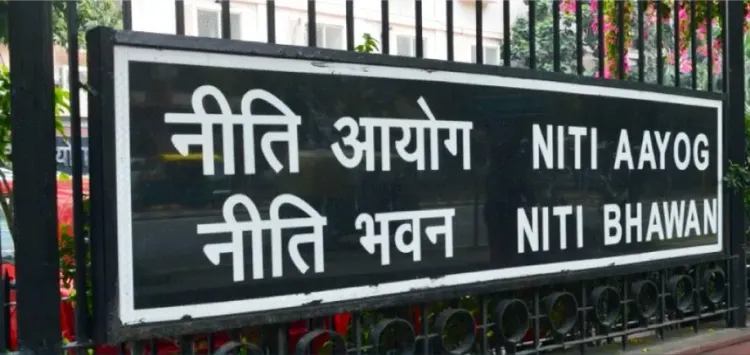Can India’s Chemical Sector Achieve $1 Trillion by 2040?

Synopsis
Key Takeaways
- India's chemical sector could reach a $1 trillion valuation by 2040.
- The sector is expected to create approximately 7 lakh jobs by 2030.
- Current trade deficit stands at $31 billion.
- Strategic reforms are essential for achieving these goals.
- World-class chemical hubs are proposed to enhance production capabilities.
New Delhi, July 3 (NationPress) Targeted reforms are set to propel India towards a $1 trillion chemical sector and secure a 12 percent share of the global value chain (GVC) by 2040, establishing the nation as a significant player in the global chemical arena, according to a report from NITI Aayog.
Currently, India holds a 3.5 percent share in global chemical value chains and faces a $31 billion trade deficit in 2023, highlighting its reliance on imported feedstock and specialty chemicals.
The goal for 2030 is for India to evolve into a global manufacturing hub for chemicals with a 5 percent-6 percent stake in the global chemical value chain.
BVR Subrahmanyam, CEO of NITI Aayog, emphasized that the chemical sector is significantly larger than many traditional industries in the nation and now is the opportune moment to capitalize on it.
“We are a substantial producer of chemicals. This sector is expanding rapidly. Chemicals, both organic and inorganic, permeate nearly every aspect of our lives,” he stated at the event.
The sector aims to double its current output and drastically reduce the trade deficit from $31 billion in 2023 to achieve a net zero balance in chemicals. This initiative is expected to boost exports by $35-40 billion and create approximately 7 lakh skilled jobs, the report revealed.
However, the report asserts that with strategic reforms that include a wide array of fiscal and non-fiscal measures, India can attain the $1 trillion target for its chemical sector.
Proposed initiatives include establishing world-class chemical hubs by improving existing clusters and creating new ones, alongside forming an empowered committee at the Central level, which would also manage a Chemical Fund for shared infrastructure development and financial support.
Furthermore, the initiatives call for the establishment of an administrative body at the hub level to oversee its management, enhancement of existing port infrastructure, development of eight high-potential clusters, and the introduction of an ‘Opex subsidy scheme for chemicals.’
The government is also advised to incentivize incremental chemical production based on the import bill, export potential, and dependency on single-source countries. The proposed scheme would offer incentives on incremental sales to selected participants over a defined period.
Additional recommendations include advancing and accessing technologies to boost self-sufficiency and innovation, distributing R&D funds to promote collaboration between industry and academia, and establishing partnerships with MNCs to secure access to technologies not available in India, including negotiating free trade agreements (FTAs) to foster industry growth.









